1960s
Multiple wives for men over 60
April 1966: Noting that there are more women than men over the age of 60, and that women over age 60 often are widowed and may "subsist on inadequate diets and live in a state of sexual frustration," Utah physician Victor Kassel proposed a solution: allow men over age 60 to have more than one wife. In this way, many lonely, older women might once again have a husband, albeit one they're sharing
The Baytown Sun - Apr 19, 1966
In later remarks, Kassel complained that the publicity which his proposal received overemphasized the sexual aspects of his proposal. But to be fair to the media, he himself drew attention to some of the sexual benefits (for men) of polygyny:

left: Idaho Daily Statesman - Sep 11, 1966; right: Fort Lauderdale News - Apr 16, 1966
One English wife offered the following response to Kassel's proposal:

Sunday Mirror - Apr 24, 1966
Some general remarks:
- I don't know why many news articles referred to him as "Victory Kassel". His name was Victor.
- The media frequently said he was promoting polygamy (multiple spouses), when he was actually, more specifically, advocating polygyny (multiple wives).
- One might assume that because Kassel lived in Salt Lake City and was promoting polygyny, that he was Mormon. He was actually Jewish, born in New York City.
- According to his obituary published in The Deseret News (Mar 11, 2005), he later admitted that his proposal was "tongue-in-cheek". I managed to find a reprint of his article and made a pdf copy of it. Parts of it do seem like he was trying to be intentionally outrageous, such as the passage below. But judge for yourself.
It can be argued that the jealousy aroused as the result of the competition would be carried to an extreme by the women and would disrupt the quiet, peaceful home. This may occur. But when there is a choice between uninterested, dowdy, foul-smelling hags and alert, interested, smartly dressed ladies, the selection is obvious.
Posted By: Alex - Mon Apr 18, 2022 -
Comments (3)
Category: Elderly and Seniors, Marriage, 1960s
Follies of the Mad Men #530

Source.
Posted By: Paul - Mon Apr 18, 2022 -
Comments (0)
Category: Hunting, Trapping and Other Wilderness Activities, Sexuality, Stereotypes and Cliches, Advertising, 1960s
Dragan Petrik’s Ice Railroad
In 1967, Dragan Petrik was granted a patent (No. 3,343,495) for a high-speed, rocket-powered train that would run on blocks of ice. In an Oct 1967 column, NY Times reporter Stacy V. Jones provided some details:Dragan R. Petrik of Pretoria was granted a patent last week for vehicles equipped to change the blocks as they melt and wear down, without stopping the train.
Patent 3,343,495 provides for propulsion by jet, rocket thrust, propellers or other means independent of the usual wheel traction. While conventional rails could be used, Petrik prefers a flanged metal surface that can be heated in cold climates.
Each car is to have cold rooms for storage of the ice. Blocks are to be forced down through ducts under control of a sensing unit that maintains the car at proper height.
Conventional wheels may be used in a station or for emergency support. A set of ice blocks is provided just ahead of and in back of each set of wheels. One ice skid can be used while another is being replenished.
For braking, there is a rubbing surface along the track, on which friction pads can be applied.
Petrik says his system will make possible very high speed for all types of land vehicles.
I have no idea if this would work, but it would be interesting to see it tested out.

Posted By: Alex - Sun Apr 17, 2022 -
Comments (2)
Category: Patents, Trains and Other Vehicles on Rails, 1960s
René Lavand, One-Armed Magician
His Wikipedia page.
Posted By: Paul - Sun Apr 10, 2022 -
Comments (2)
Category: Disabilities, Human Marvels, Magic and Illusions and Sleight of Hand, Television, 1960s
Dewey Decimal and the Librarians
Their entry at Discogs. Alas, no audio files available.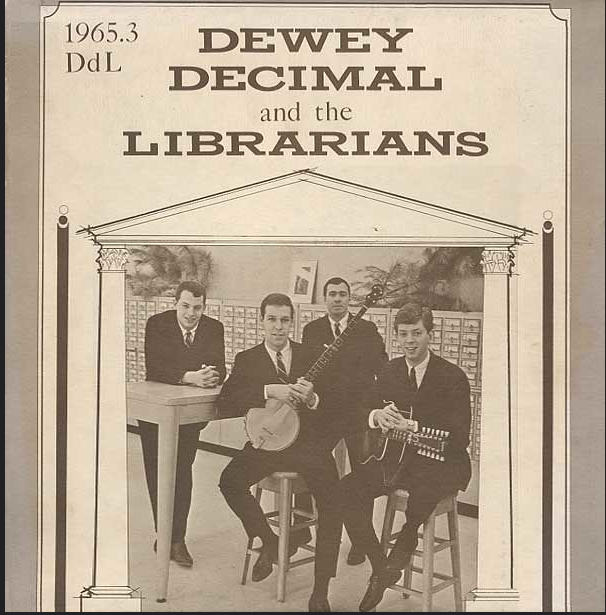
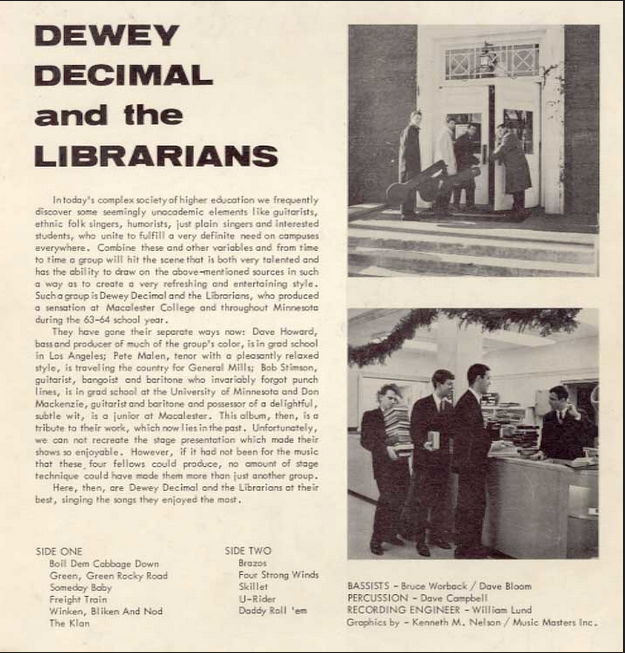
Posted By: Paul - Mon Apr 04, 2022 -
Comments (2)
Category: Geeks, Nerds and Pointdexters, Music, Libraries, 1960s
Recipes for the fallout shelter housewife
Marie Adams, food editor of the Charlotte News, felt that nuclear war shouldn't stop a "fallout shelter housewife" from providing her family with tasty meals and "appetizing snacks". In a 1961 column (Sep 7, 1961) she offered suggestions for fallout shelter meals that included deviled ham and parsley dip served with tomato juice, swedish fruit soup with cheeses, and vichyssoise with crackers.


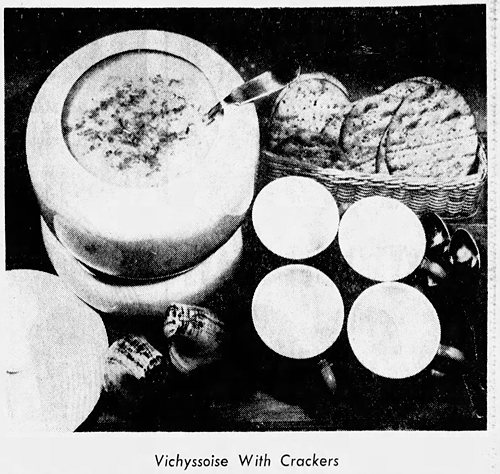
A response from a reader of the Charlotte News:

Charlotte News - Sep 11, 1961
Posted By: Alex - Tue Mar 22, 2022 -
Comments (3)
Category: Food, War, Atomic Power and Other Nuclear Matters, 1960s
Wiggle Room
Must have been a slow news day at the Newport Daily News (Newport, Rhode Island)for 26 Jan 1966, Wed Page 22.
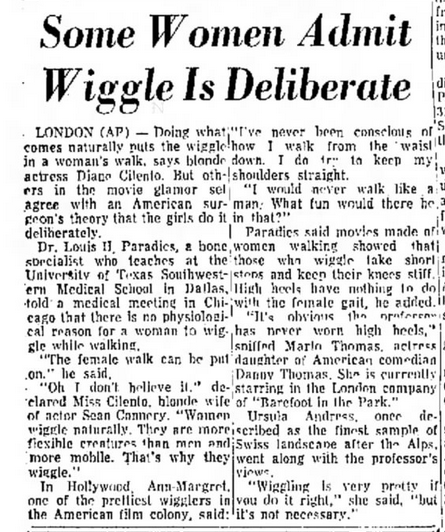
I assume everyone can picture Ann-Margret, Marlo Thomas and Ursula Andress. But for your benefit, here is wiggler Diane Cilento, Mrs. Sean Connery.
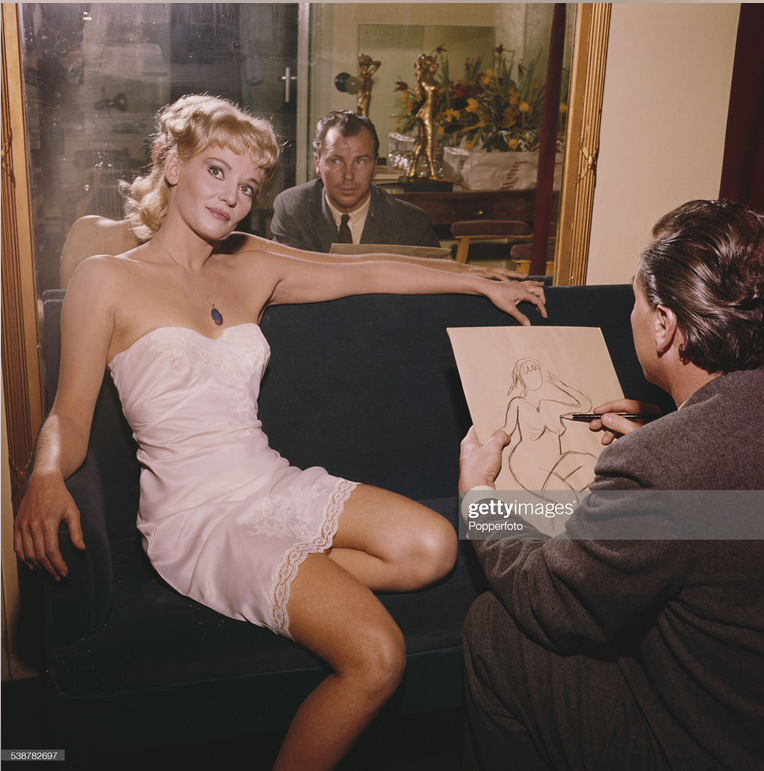
Posted By: Paul - Tue Mar 22, 2022 -
Comments (1)
Category: Medicine, Sexuality, Studies, Reports, White Papers, Investigations, 1960s, Women
Lorne Greene, “Ringo”
Another in our series of "Actors Who Should Have Stuck to Acting."
Posted By: Paul - Sat Mar 05, 2022 -
Comments (5)
Category: Guns, Hollywood, Music, Television, Wild West and US Frontier, 1960s
Bird-Cage Earrings Containing Live Birds
Worn by actress Shary Marshall - Apr 1967. Designed by Lynda Bird Johnson, daughter of President Johnson. The cages contained Australian Snow Finches.
The Orlando Sentinel - Apr 1, 1967
They would pair well with this bird hat that we've previously posted about (worn by actress Jane Bough in 1968).

Posted By: Alex - Wed Feb 23, 2022 -
Comments (3)
Category: Fashion, Headgear, 1960s
King Croesus

Their Wikipedia page.
Posted By: Paul - Sat Feb 19, 2022 -
Comments (0)
Category: Music, Myths and Fairytales, Psychedelic, 1960s, United Kingdom

| Who We Are |
|---|
| Alex Boese Alex is the creator and curator of the Museum of Hoaxes. He's also the author of various weird, non-fiction, science-themed books such as Elephants on Acid and Psychedelic Apes. Paul Di Filippo Paul has been paid to put weird ideas into fictional form for over thirty years, in his career as a noted science fiction writer. He has recently begun blogging on many curious topics with three fellow writers at The Inferior 4+1. Contact Us |




